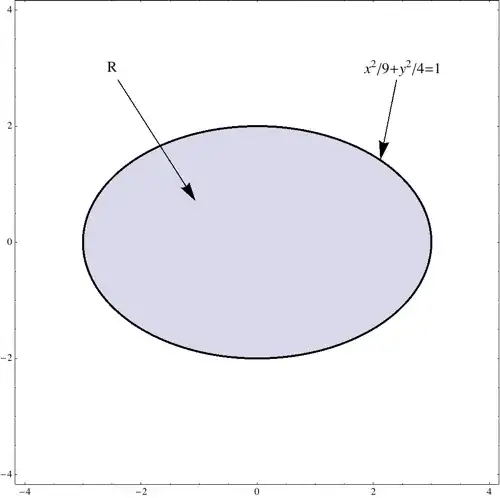It sounds like you're just a bit confused about notation. $R$ is simply the name of the region. The notation
$$\iint\limits_{R} f(x,y) \, dA$$
simply means that we should integrate over the region $R$. In your case, $R$ is defined to be the region contained inside the ellipse
$$\frac{x^2}{a^2} + \frac{y^2}{b^2} = 1.$$
For $a=3$ and $b=2$, this situation could be illustrated as follows:

As the other answers already indicate, the integral can be evaluated easily by a change of variables $x=ar\cos(\theta)$ and $y=br\sin(\theta)$. It can also be expressed as an iterated integral in Cartesian coordinates
$$4\int_0^3 \int_0^{\frac{b}{a}\sqrt{a^2-x^2}} \left(1-\frac{x^2}{a^2} - \frac{y^2}{b^2}\right) \, dy \, dx,$$
which evaluates to $2\pi a b/5$, though it's certainly more algebraically cumbersome than the change of variables approach.
